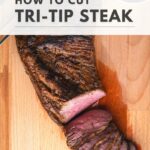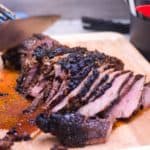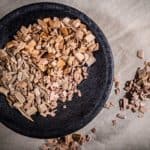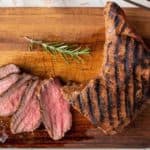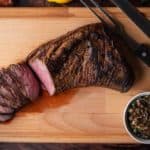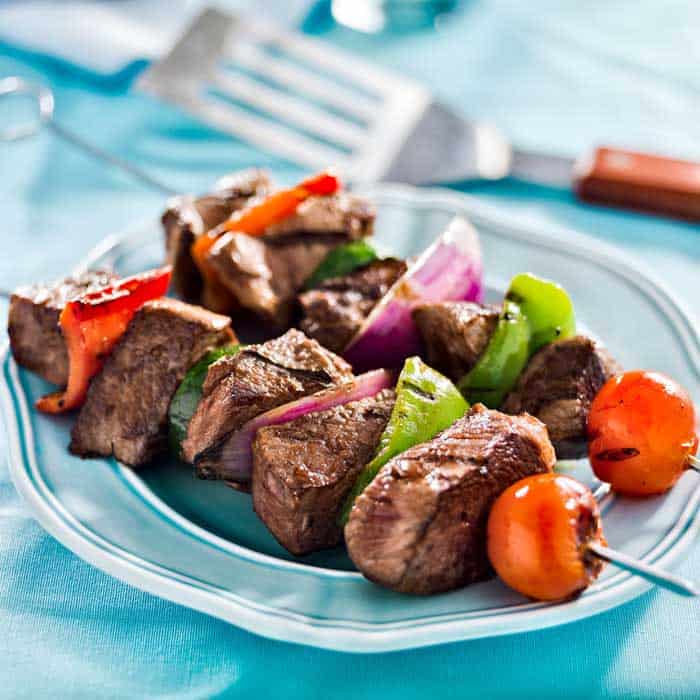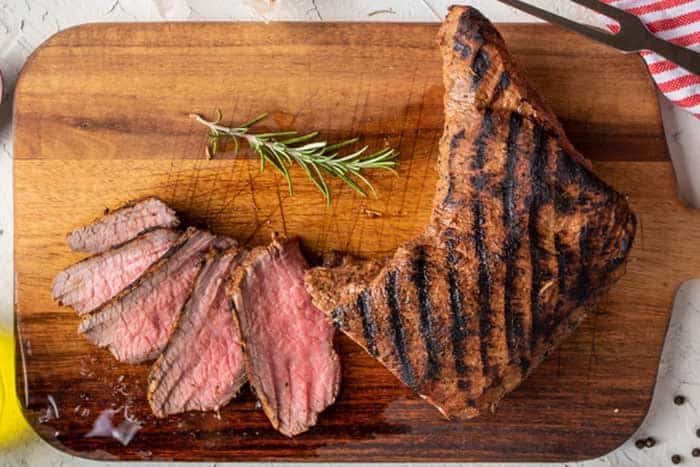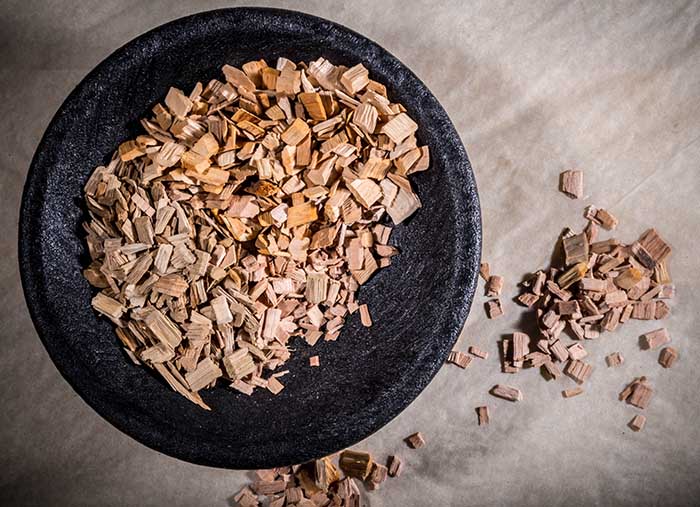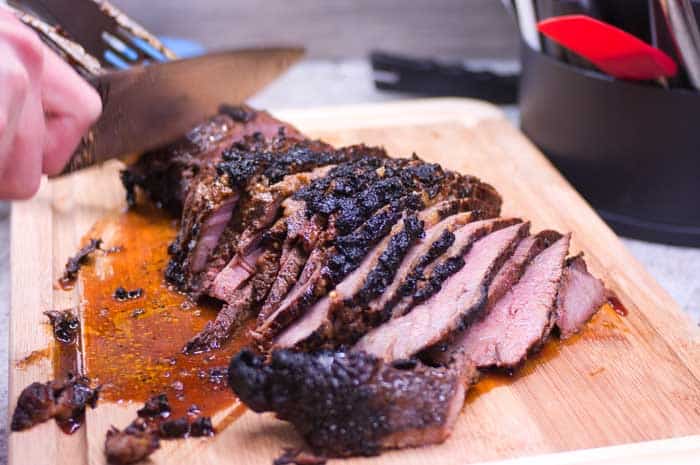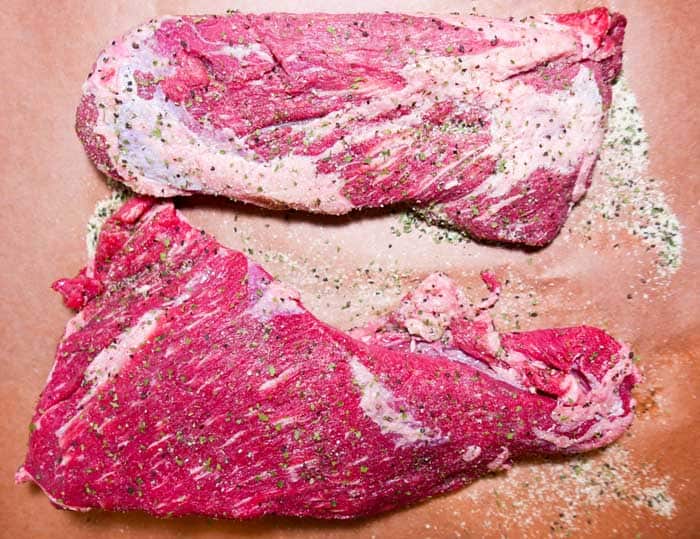Slice beef tri-tip perfectly every time with our easy meat carving guide. From cutting against the grain to quick serving tips, discover how to cut tri-tip today.
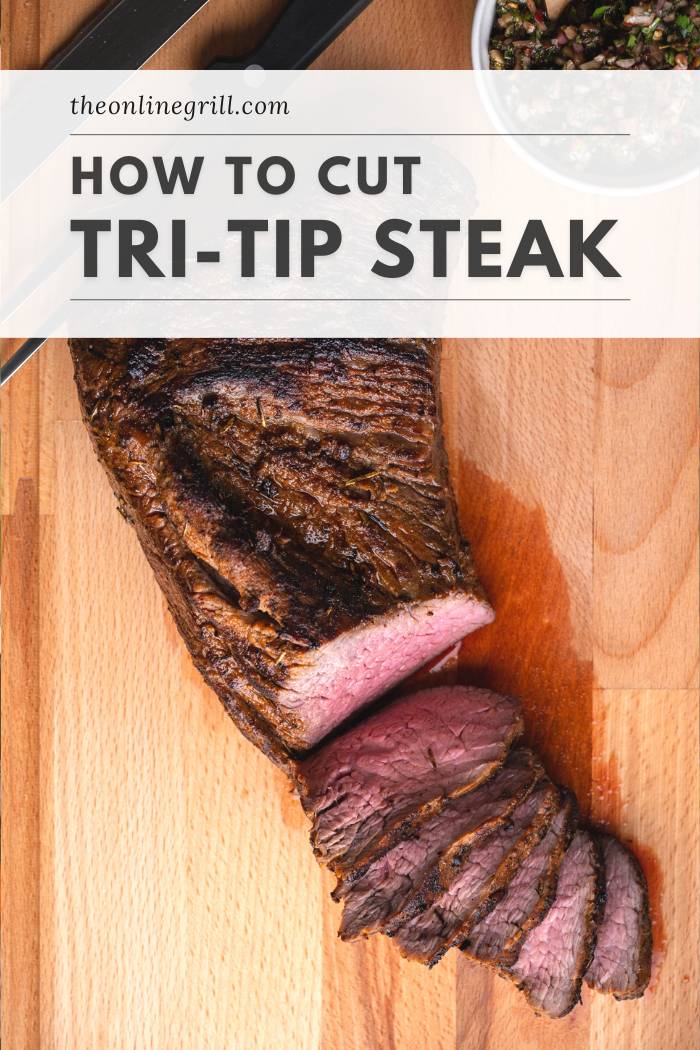
Tri-tip is a delicious cut of beef, but to get the best out of it, you need to know exactly how to deal with its unique dual-grain texture.
Let’s take a closer look at what makes tri-tip unique and how exactly to slice it to ensure that every bite is equally as tender and tasty.
Beef Tri-Tip
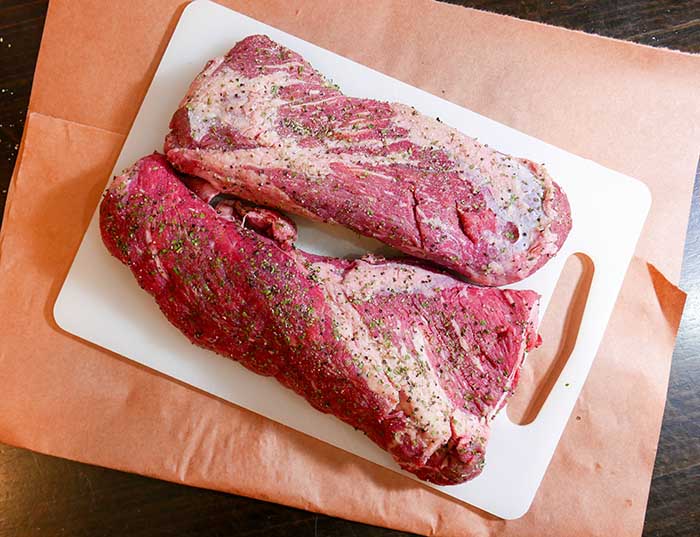
Tri-tip is a cut of beef from the sirloin subprimal, with the top of the sirloin giving us sirloin steaks and the bottom producing the tri-tip.
Sourced from the hip area of the steer, beef tri-tip is a relatively tender meat cut thanks to having a decent amount of marbling and a good-sized fat cap. When cooked and served correctly, it should have the beefy flavor of sirloin paired with a buttery texture similar to ribeye.
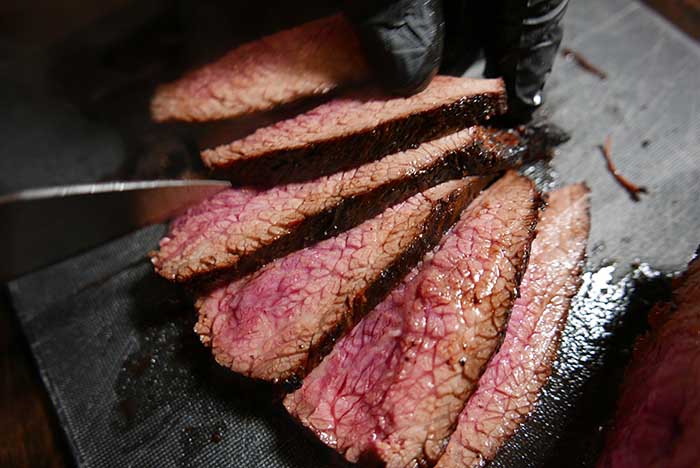
Beef tri-tip is easily distinguished by its triangular shape and two different grain directions. It may also be referred to as Santa Maria steak, Newport steak, Triangle steak, or bottom sirloin roast, depending on where you are purchasing it.
Tri-tip is a versatile cut that tastes great as a standalone steak but can also be used in recipes that call for steak strips like tacos or fajitas.
Meat Grain Explained
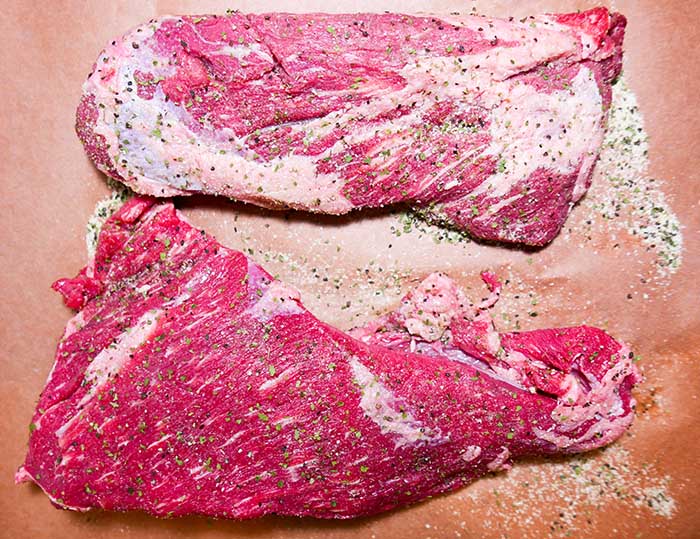
We’re told time after time to make sure we slice meat ‘against the grain’, but what exactly does that mean and why is it so important?
The ‘grain’ of something refers to the pattern in which the meat fibers are arranged. It’s used to describe the texture of lots of things, such as wood and fabric, as well as meat.
In meat, grain is specifically used to describe the direction that the muscle fibers are aligned.
How we slice the meat (either with or against the grain) determines how chewy the beef is. If we cut against the grain, we make those long fibers shorter, making it easier to break up the fibers when chewing the meat.
You can have the most tender cut of meat in the world, perfectly cooked and ready to serve, but if you cut it the wrong way, it can still be chewy.
How to Slice Tri-Tip
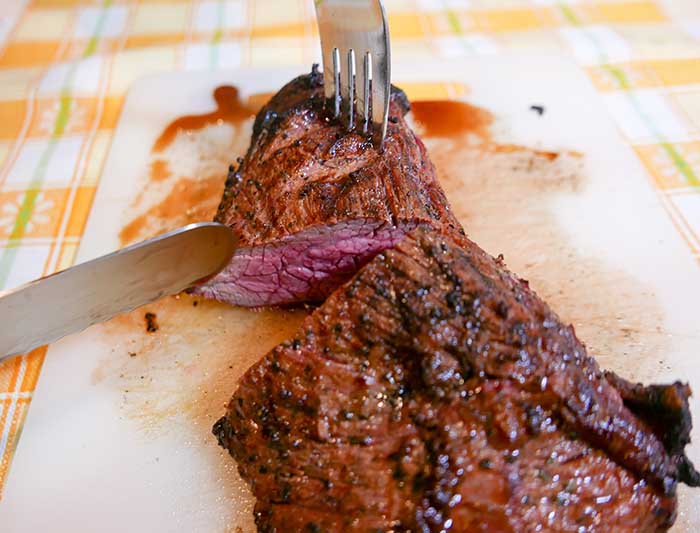
The two different grain directions on a tri-tip steak are separated by a fairly large fat seam that runs midway through the steak. Once you find this seam, the various grains are easy to identify. The grain of the shorter side will run parallel to this seam, whereas the seam for the larger tip side runs at a diagonal of around 30° to the fat seam.
Step-by-Step
- Place your cooked tri-tip steak on a chopping board, so the center fat seam goes straight up and down. The pointed ‘tip’ part should be facing your body.
- Cut the meat in half along that seam to give yourself one long triangle steak with the tip point and one short triangular-shaped steak.
- Working on each steak individually – identify the way that the grain is running, turn the steak so that the grain is at a right angle to your body, and start to slice through the meat.
- To ensure you’re making the meat as tender as possible, you can also slice ‘on a bias’. To do this, tilt your knife and slice diagonally at around a 45° angle. Doing this makes the muscle fibers even shorter.
The thinner the slices you make, the shorter the fibers and the more tender the steak will be. You’ll be able to tell if you’re cutting against the grain correctly from how the meat looks – you will see the grain texture (that looks like wood grain!) in each slice.
Tri-Tip FAQ’s
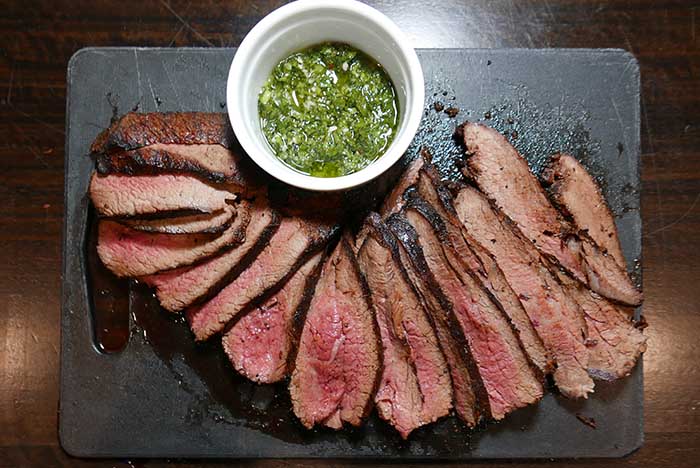
Can I slice tri-tip raw?
Beef tri-tip can be sliced either raw or cooked, but generally, it’s suggested that it’s easier to cut once cooked.
Not only is it a bit ‘sturdier’ but cutting beef after it’s been cooked means you don’t lose as much moisture.
When you cook beef, the heat causes the muscle fibers to shrink, making the meat firm but also pushing out moisture. If you leave your steak in one piece before cooking, this moisture has less surface area to escape from than if it was already cut into slices.
How thick should tri-tip be sliced?
The thickness you slice tri-tip to is mainly personal preference and will usually depend on whether it’s being cut to serve or used in a recipe.
Do you need to trim tri-tip before cooking?
Depending on where you buy your beef from, you may find that your tri-tip still has the fat cap attached.
You don’t need to remove the fat cap before cooking, but as tri-tip cooks quickly, the fat won’t have time to render down properly.
Some people prefer to leave it on to help keep the steak juicy – If you do leave it on when cooking, then you’ll want to trim the fat cap off before slicing the steak. If you’re using it to add to recipes (fajitas or sandwiches, for example), you don’t want a chewy piece of fat on the end of a tender steak strip halfway through a meal.
